Your cart is currently empty!
If you’ve done a particularly hard run or it’s been a few hours since you went to the gym, you’ll find yourself feeling a little bit sore. You may also gradually accumulate soreness in one muscle and it begins to feel tight even at rest. One of the best ways to relieve that soreness or tightness is through stretching out the muscle.
It’s worth mentioning that while stretching can be good for muscle soreness through helping your recovery, it is debated whether it actually does reduce your soreness. If it feels good though – there’s no reason to stop as stretching doesn’t show many negative effects. Muscle tightness on the other hand is only temporarily relieved by stretching. Muscle tightness is generally a sign of a muscular imbalance through running or gym exercises. Stretching can help your sensation of tightness but will not fix the root problem. So be advised that if you’re tight rather than sore, a combination of stretching and strength is better.
In this article I’ll cover the difference between soreness and tightness. What the most effective approach to stretches is. And what stretches you can do for the areas that get sore or tight.
Soreness vs Tightness
As touched on the introduction, there is a difference between soreness and tightness and your approach to relieving either of them will vary.
Soreness is generally a feeling of pain or stiffness in the muscle shortly after exercise. You’ll feel more sore after doing a new type of session or exercise. For example, moving to 400m intervals vs 1k intervals or doing a heavy squat for the first time. The key thing differentiation between soreness and tightness is the time period to disappear. Soreness should disappear within 48 hours or so.
Tightness is generally defined as a muscles inability to move through its full range of motion due to it being in a shorter and more contracted state. This can be due to overuse of the muscle due to training load or even a strength imbalance relative to other muscles. Tightness tends to last a longer period of time than soreness. Tightness can be persistent, even if you’re 3-4 days or more after a hard or new session and you’re only running easy you may still notice some intense aches when you’re in certain positions.
Soreness will usually present itself in muscles that you have worked hard recently whereas tightness typically presents itself in the lower back, hip flexor and calves – even if you feel like you haven’t worked them intensely in a recent period. Tightness can result from an accumulation of training rather than one session in particular. So if you’re in a period of heavy training, haven’t done an intense session for a few days and you’ve got an ache – chances are you’re tight.
To help your tightness why not take on one of my strength and conditioning programmes or go even further and get some strength coaching.
What’s the best approach to stretching?
You need to think about 3 things for how to get the best stretch – time, intensity and frequency.
Time – Generally the most time efficient method of stretching is to hold the stretch for 30 seconds. Some science shows a slightly better effect for 1 minute holds but it’s only marginal considering it’s double the time. 1-2 sets of the stretch are best. Only doing 1 set doesn’t show much benefit at all.
Intensity – A hard stretch is generally a better one. This doesn’t mean put yourself into agony trying to hold a stretch but you should be bordering on as much stretch as you can get. A very shallow stretch will do little to help your recovery and/or increase your flexibility.
Frequency – For reducing muscle soreness after an intense session, just once per day for the few days after your session is enough to reduce your soreness. Stretching just after your session and not in the days after may not be enough to reduce your soreness compared to stretching over multiple days. Comparatively, to increase your flexibility and potentially reduce tightness, just 1 session a week may be needed. However, I’ll say again, if you’re feeling a benefit, keep doing it.
What stretches should you do?
Well that will all depend on what you feel is sore or where you’re tight. But here I’ll outline some good stretches for common sore or tight areas.
Lower Back
Cobra – Lay yourself on your front and lift your chest of the floor by pushing through your hands. Try to push yourbelly button forward whilst pulling you shoulder blades back.
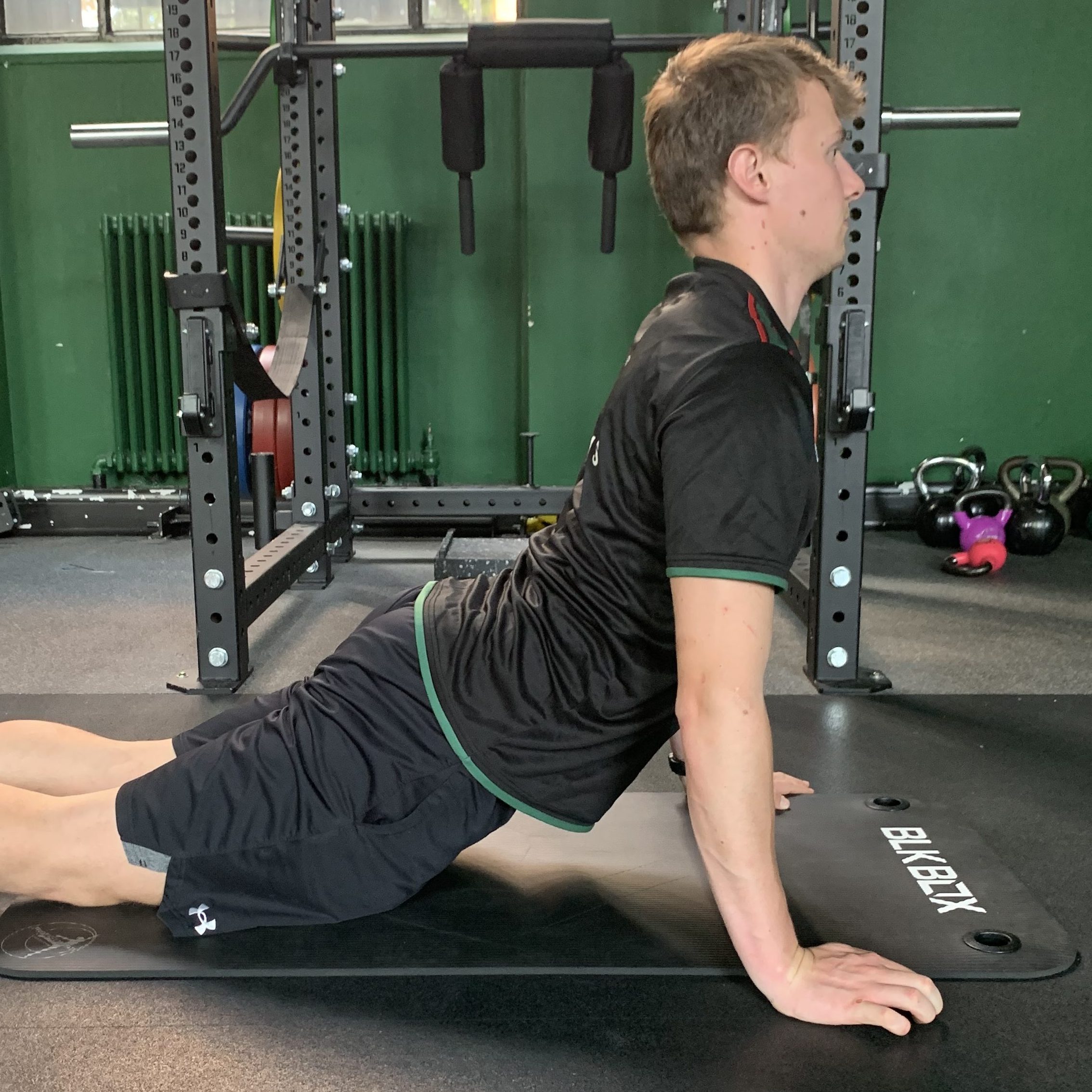
Calves
Calf Stretch – Find a stable object to lean on with your hands in front of you. Push one leg behind you as far as you can while keeping your heel on the ground. Use the other leg to support yourself
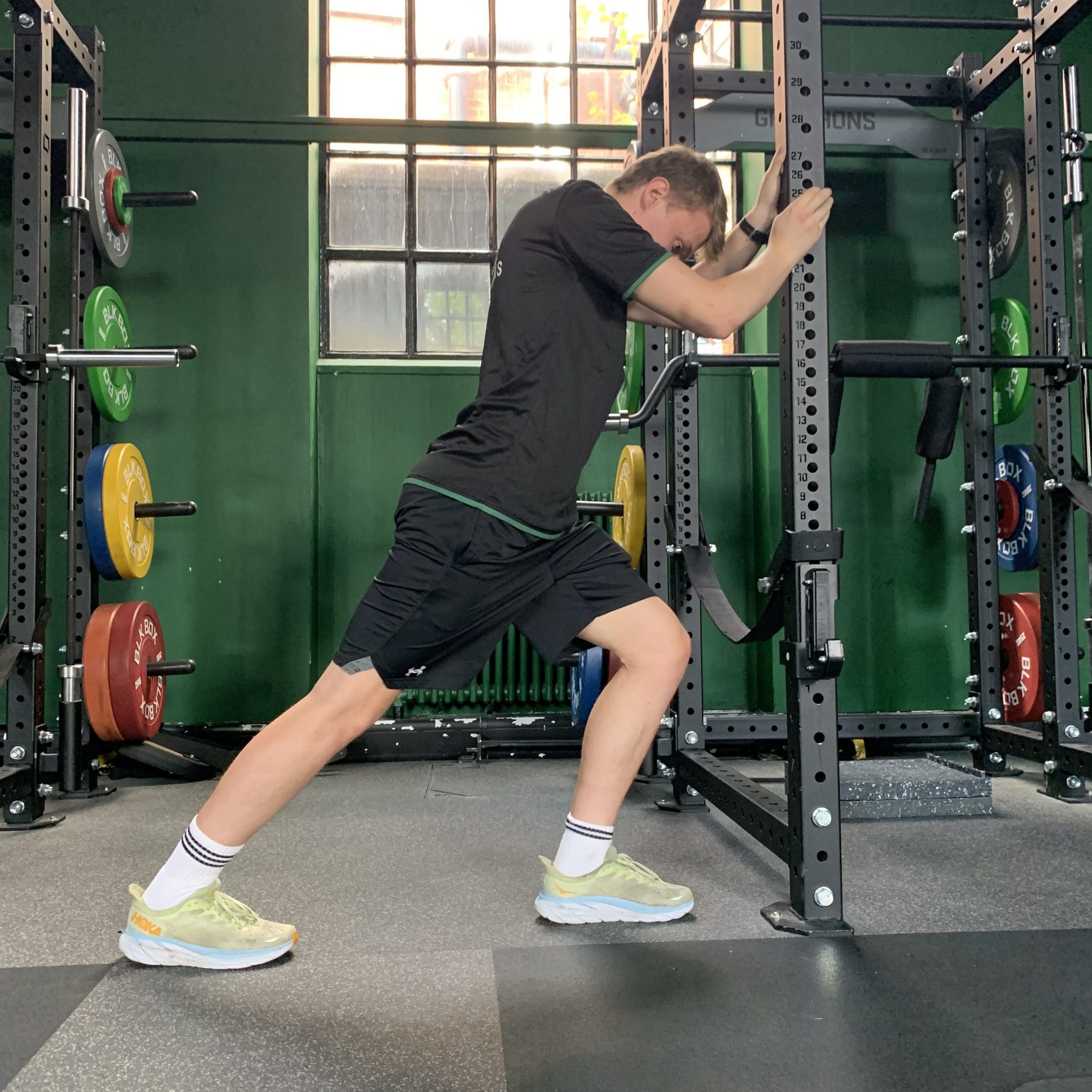
Hamstrings
Lying Hamstring Stretch – Lay down on your back and lift one leg off the ground. Place your hands around the back of your knee and pull the leg towards you while keeping your legs straight.
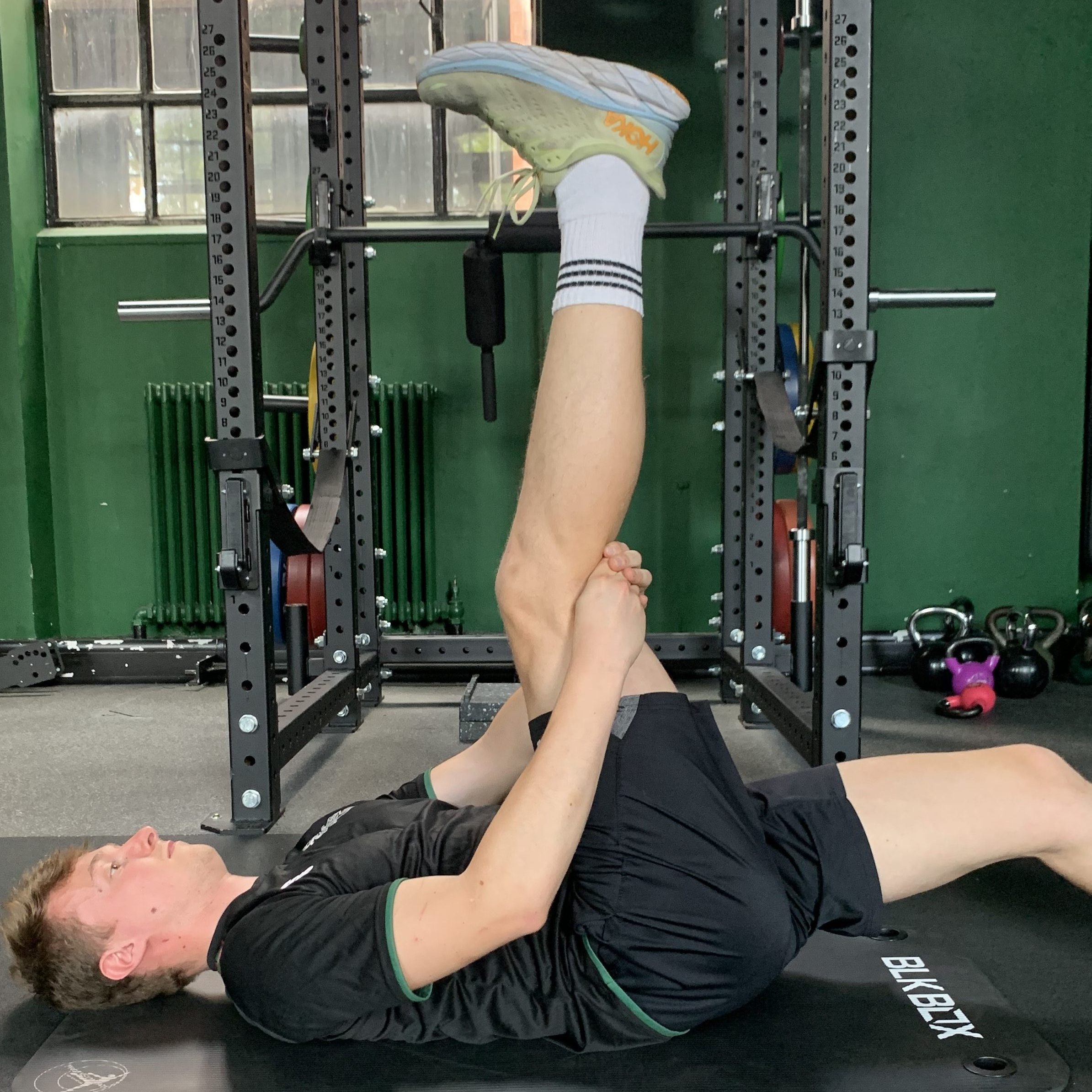
Hip Flexors
Couch Stretch – Get yourself onto one knee. Reach for the ankle of your trail leg and pull it up towards your bum. Squeeze your glutes for an extra stretch.
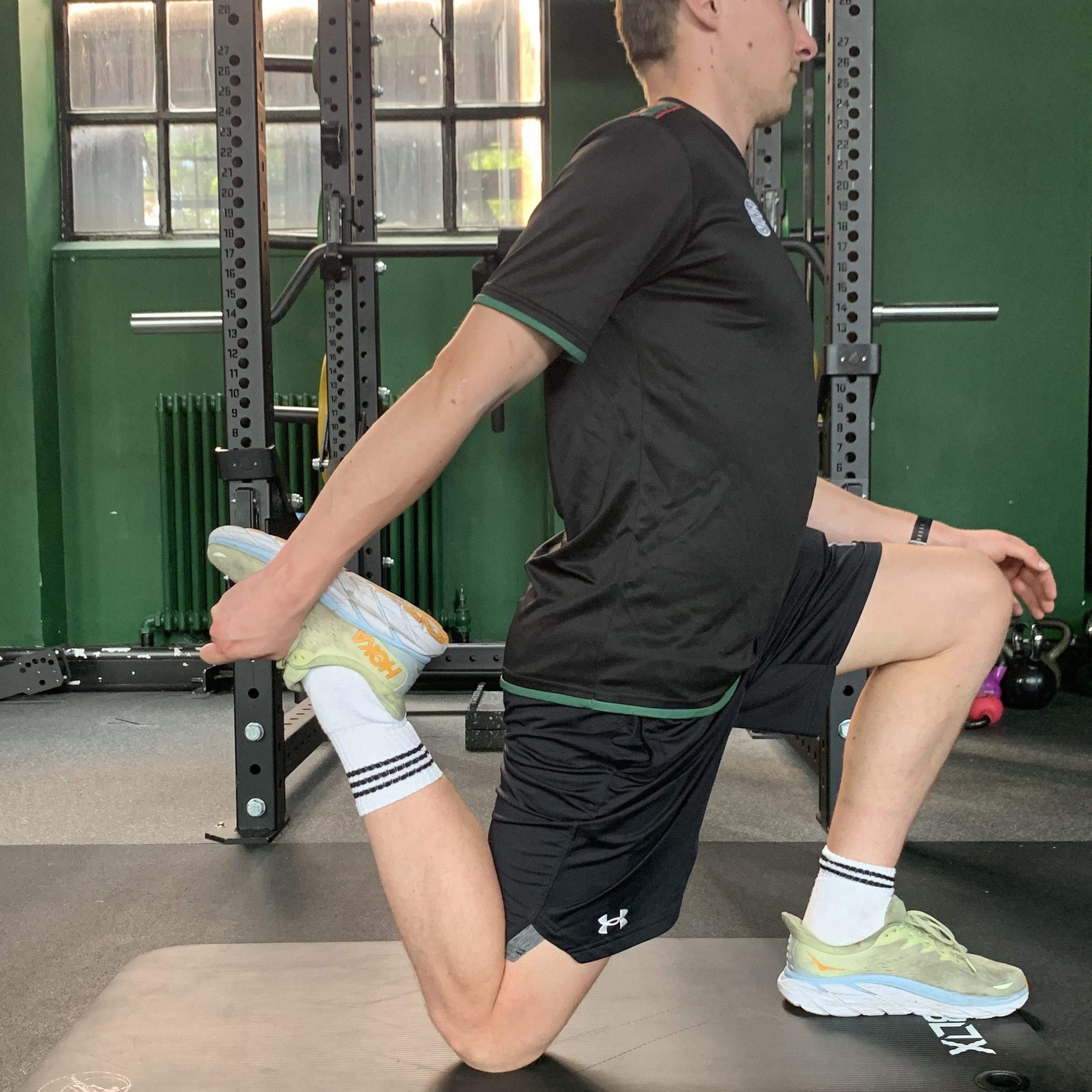
Glutes
Pigeon stretch – Get yourself on to one knee but let the lead knee fall outwards towards the floor and lean your body forwards. Place your hands on the floor for support. To get the most out of the stretch, move your foot as far forwards while keeping the inside of your ankle pointing up.
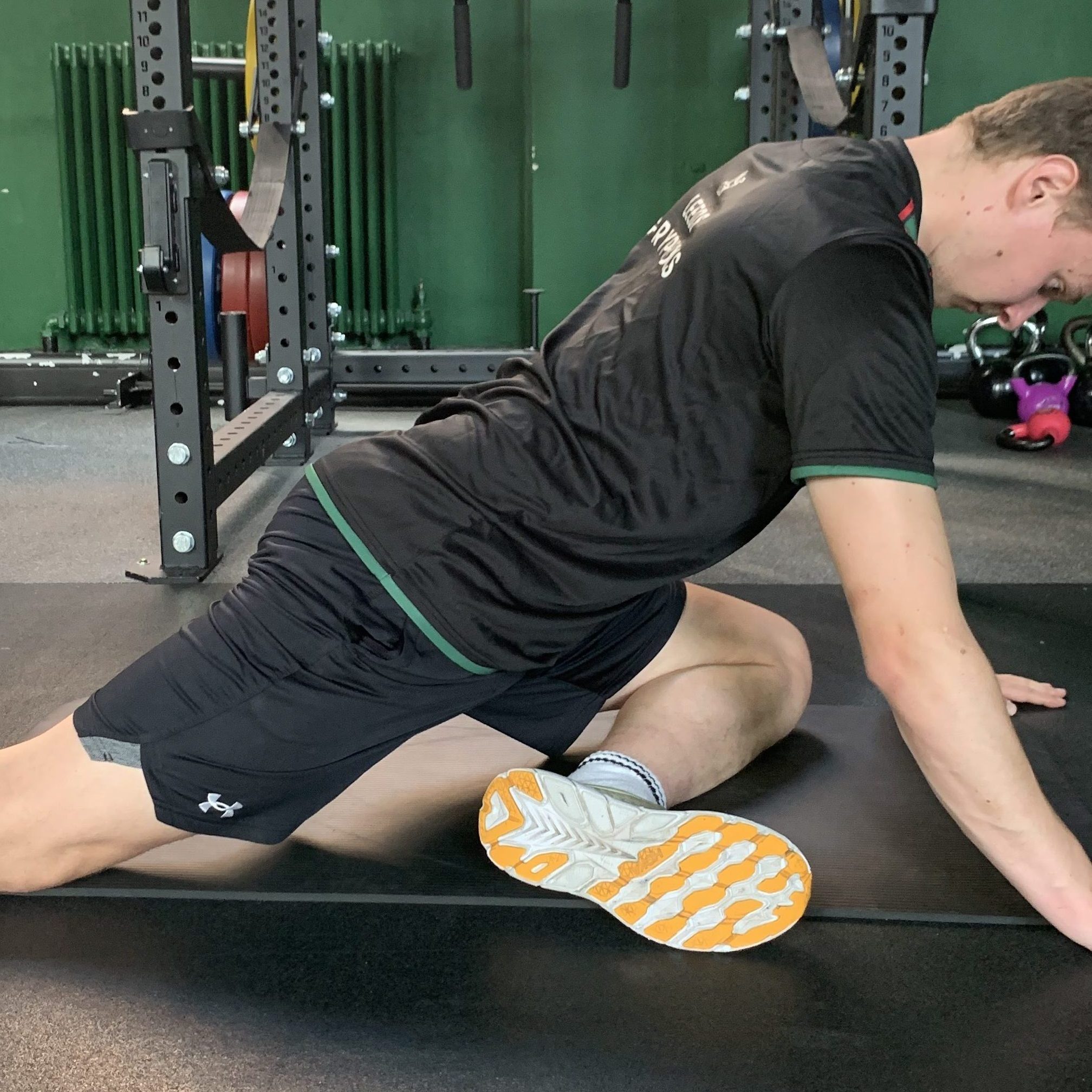
Summary
There’s a slight difference in your approach depending on if you are sore or tight. If you are sore, just stretching is fine to help reduce your soreness however if you are tight stretching alone will only manage your problem rather than fixing it. Your best approach to stretching for both scenarios is ideally 1-2 sets of 30s stretches for each muscle group done for 2-4 days post intense session. The aim should be to stretch at a high intensity but not making it unbearable. These stretches should aim to target typically worked areas while running such as your calves, hamstrings, glutes, hip flexors and lower back.
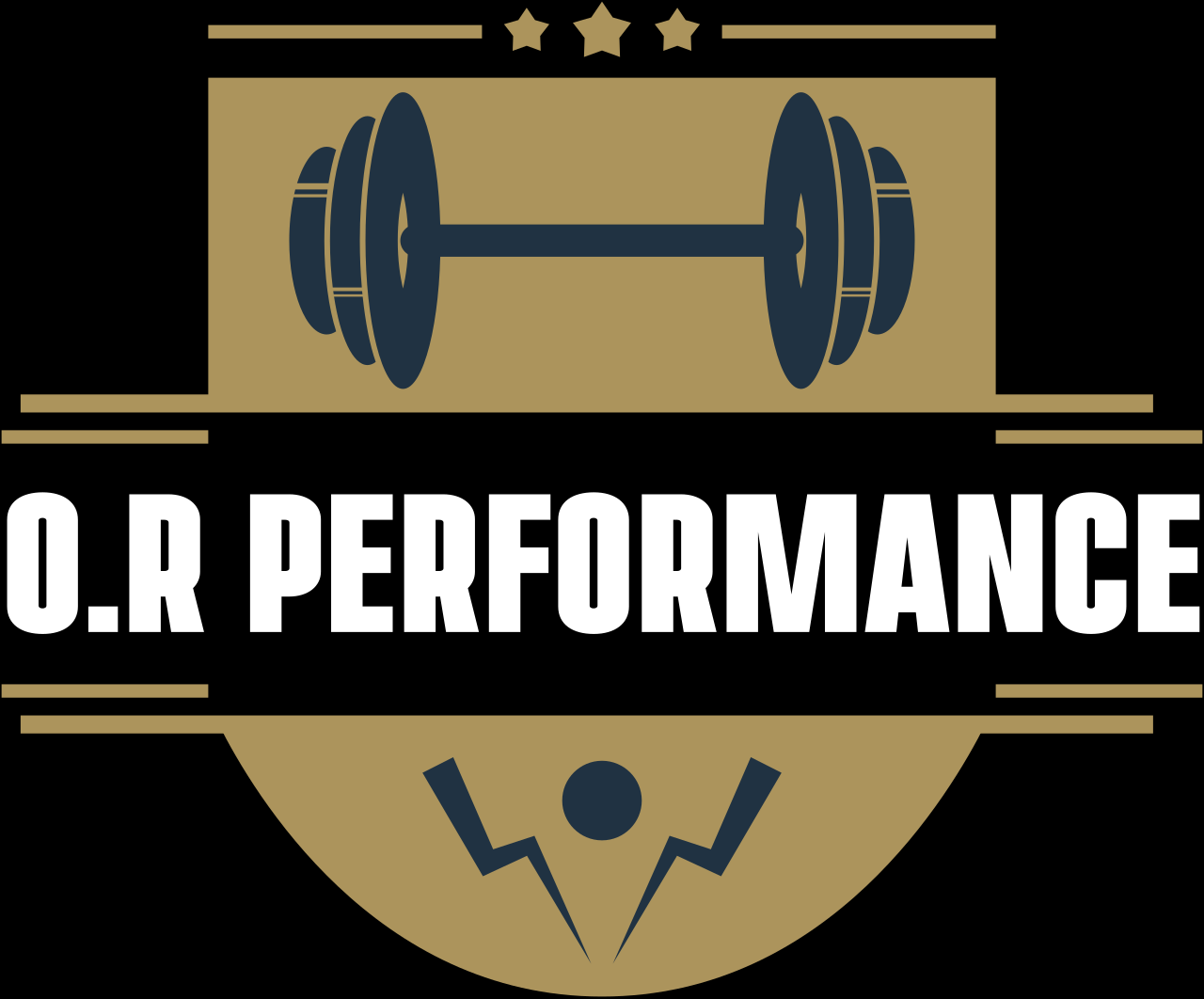
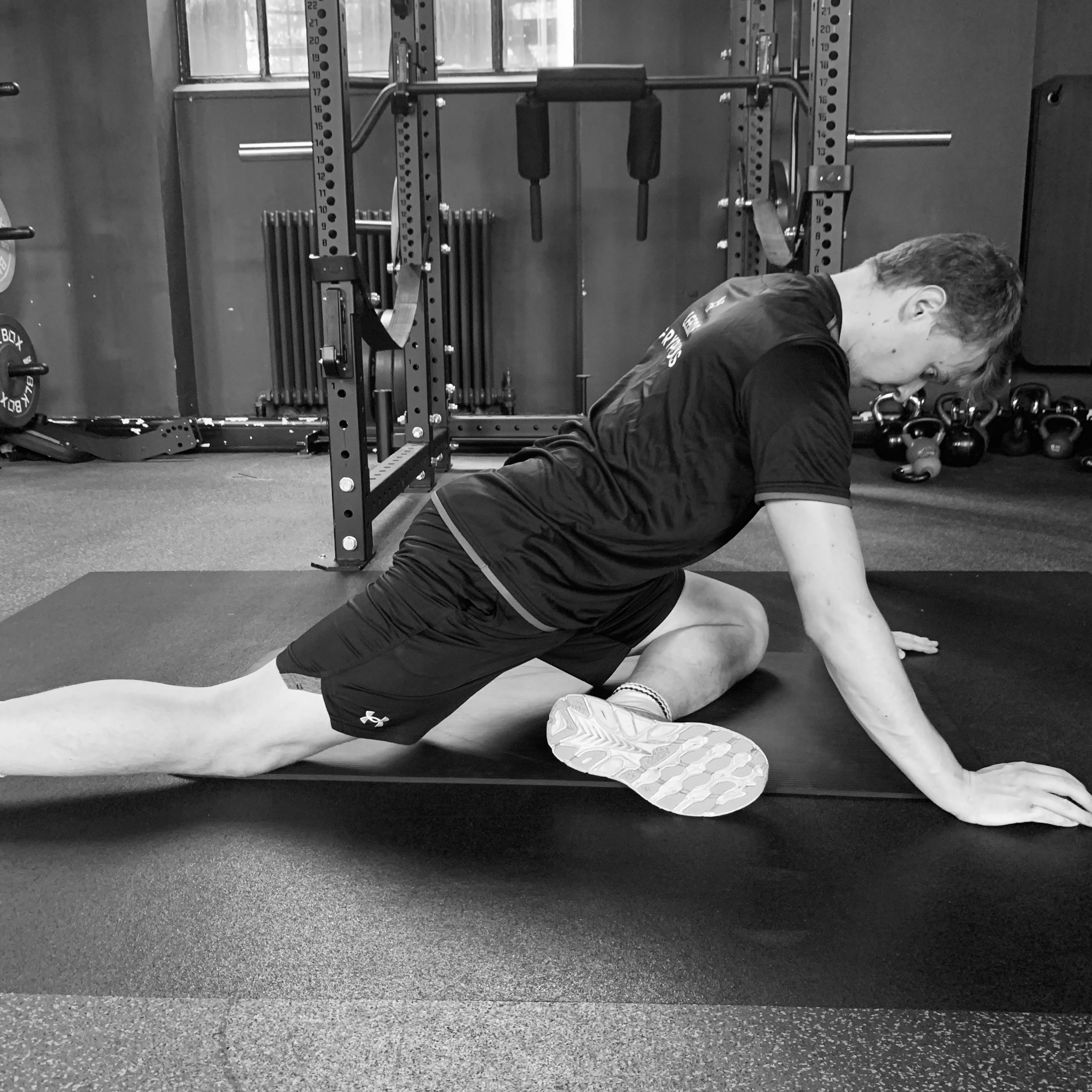
Leave a Reply